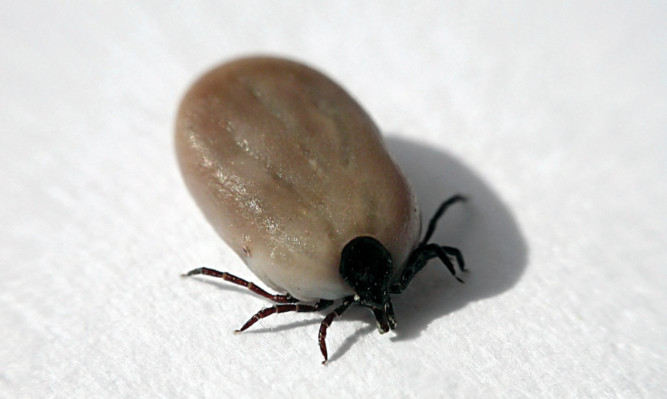A staggering increase in cases of Lyme disease in Scotland has prompted calls for a new pilot to reduce tick numbers.
Between 2001 and 2010, the number of incidents leapt from 28 to 308 a rise of 1,000% and has been linked to the death of a gamekeeper last year.
Scott Beattie, who worked as head stalker at Wyvis Estate in Ross-shire, died in Raigmore Hospital, Inverness, after admitting himself with Lyme disease, a bacterial infection spread to humans by infected ticks.
Now, in a bid to protect farmers, estate workers and tourists, the Scottish Gamekeepers Association (SGA) has outlined proposals for a revolutionary project.
It wants to treat deer and hare in a fenced area with an approved tick control product, known as an acaricide. This would take place between April and June to ensure the chemicals are not passed into the food chain.
The animals would then be scientifically monitored and tested for ticks during this period to determine its effectiveness.
SGA Chairman Alex Hogg told The Courier the pilot has been inspired by a visit to South Africa and the methods used by farmers there, which involves dosing animals with an automated spray system as they use salt licks.
“If we could fund that and get a whole project up and running, that would help to control tick numbers and bring them down,” he said.
“The number of cases of Lyme disease has risen in Scotland since we stopped compulsory sheep dipping because of the phosphates used in the dip. It was a great way of keeping tick levels down because the sheep acted like a mop when they were put back out on the hills.
“We are trying to encourage farmers to start dipping their sheep again, but I also think we could make the South African method work over here for other animals.”
Mr Hogg hopes to get backing from the Scottish Government to launch the pilot next year .The group is currently writing up a detailed proposal to go before ministers.
Plans are in place to secure funding for the project, alongside licences to use the acaricide.
As part of the pilot, the SGA would also issue guidance to doctors’ surgeries about the symptoms of tick bites, as well as advice to the general public on how to keep safe in the countryside.
